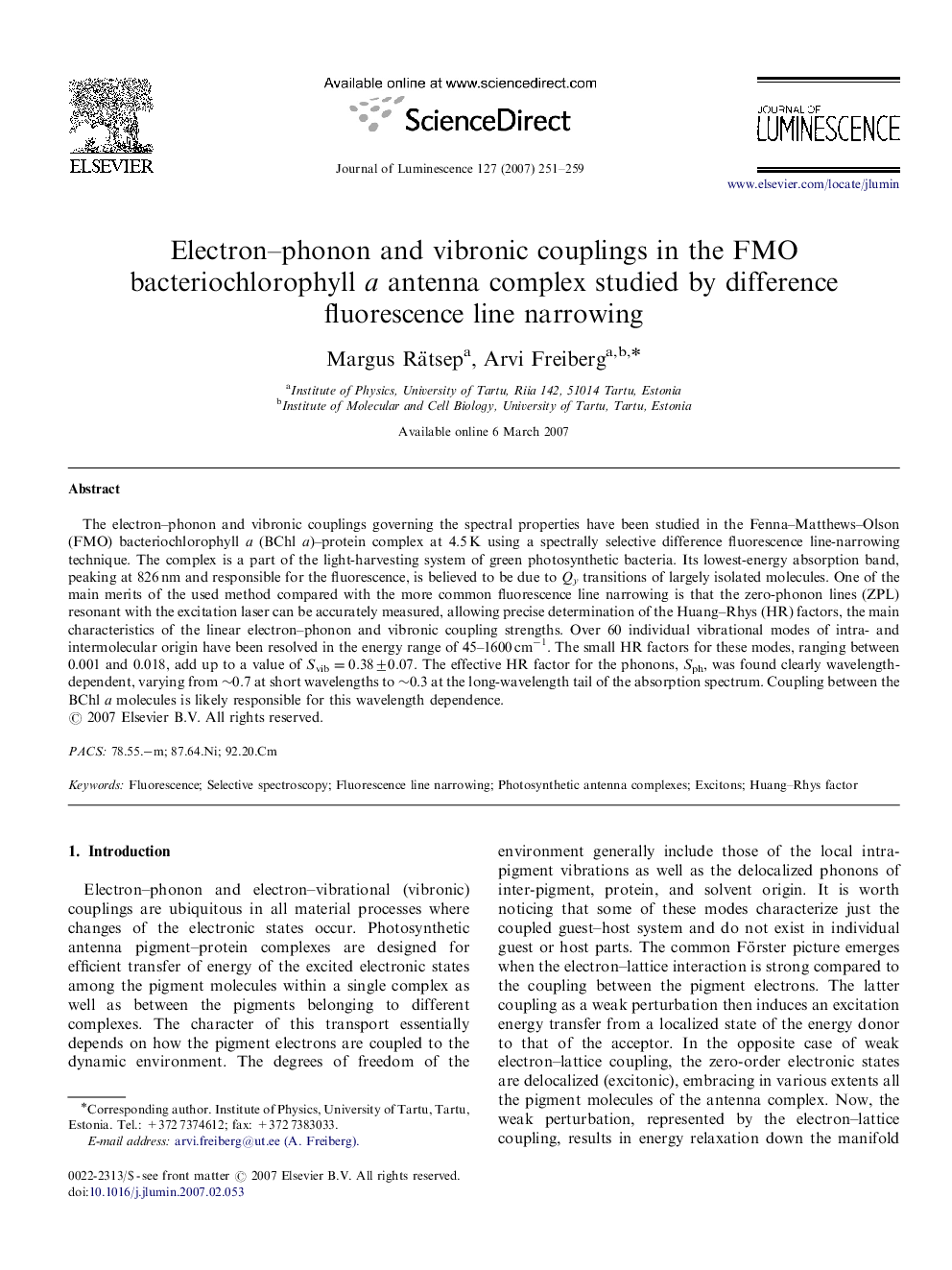| کد مقاله | کد نشریه | سال انتشار | مقاله انگلیسی | نسخه تمام متن |
|---|---|---|---|---|
| 5403987 | 1392770 | 2007 | 9 صفحه PDF | دانلود رایگان |

The electron-phonon and vibronic couplings governing the spectral properties have been studied in the Fenna-Matthews-Olson (FMO) bacteriochlorophyll a (BChl a)-protein complex at 4.5 K using a spectrally selective difference fluorescence line-narrowing technique. The complex is a part of the light-harvesting system of green photosynthetic bacteria. Its lowest-energy absorption band, peaking at 826 nm and responsible for the fluorescence, is believed to be due to Qy transitions of largely isolated molecules. One of the main merits of the used method compared with the more common fluorescence line narrowing is that the zero-phonon lines (ZPL) resonant with the excitation laser can be accurately measured, allowing precise determination of the Huang-Rhys (HR) factors, the main characteristics of the linear electron-phonon and vibronic coupling strengths. Over 60 individual vibrational modes of intra- and intermolecular origin have been resolved in the energy range of 45-1600 cmâ1. The small HR factors for these modes, ranging between 0.001 and 0.018, add up to a value of Svib=0.38±0.07. The effective HR factor for the phonons, Sph, was found clearly wavelength-dependent, varying from â¼0.7 at short wavelengths to â¼0.3 at the long-wavelength tail of the absorption spectrum. Coupling between the BChl a molecules is likely responsible for this wavelength dependence.
Journal: Journal of Luminescence - Volume 127, Issue 1, November 2007, Pages 251-259